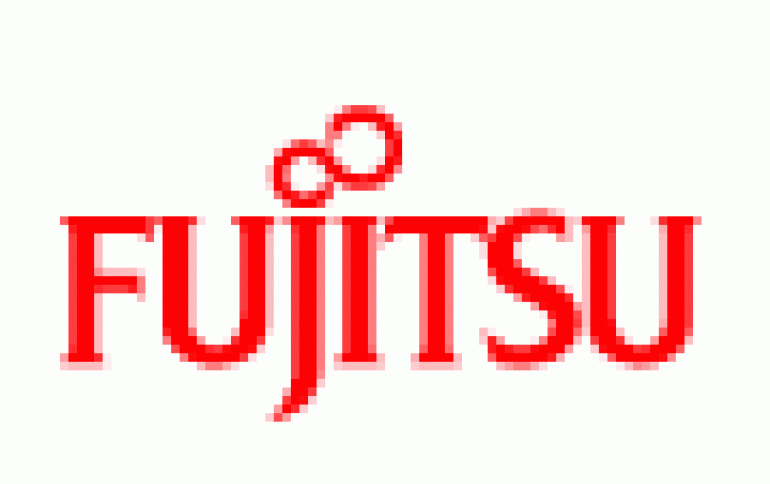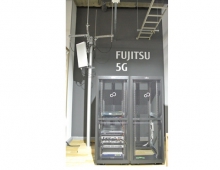
Optical Element to Facilitate Implementation of Terabit per Square Inch Recording Technology
Fujitsu unveiled a new optical element for thermal assisted magnetic recording, which would lead to the deployment of new hard drives with recording densities of one terabit per square inch.
Using the new multi-layered optical element, Fujitsu engineers were able to achieve a sub-hundred nanometer (nm) optical spot size, which is considered an enabling element for the successful deployment of one terabit per square inch recording technology for hard disk drives. The development was presented during the International Symposium on Optical Memory (ISOM) in Japan this past October.
In the Personal Computing (PC) and Consumer Electronics (CE) markets, demand for high capacity products is continuing to escalate. To address today's needs, the HDD industry has implemented perpendicular magnetic recording (PMR) technology in order to increase the storage capacity of hard disk drives. The merging of optical thermal assist and perpendicular recording is of high interest to the hard disk drive (HDD) industry, as it enables manufacturers to reach capacities around ten times greater than what is now possible.
As research and development for Terabit recording continues, thermal assisted magnetic recording is considered to be one of the crucial technologies. For this method to work, it is essential to have a very small optical spot with high optical transmission efficiency on the recording media.
The succesfull implementation of thermal assisted recording technology requires the optical elements to be incorporated into the hard disk drive magnetic head manufacturing process. The output beam size needs to be focused to an extremely small size to achieve the very high density recording at 1 Terabit per square inch (1 Tbit/in2). In addition, high optical transmission efficiency is required to heat the recording spot to allow easier recording on high coercivity magnetic media.
Using a specially designed optical element, Fujitsu was able to attain a spot size of 88nm x 60nm with 17% optical efficiency. In this optical element, a multi-layered structure with an optical transmission layer was adopted.
"This achievement realized by Fujitsu with the multi-layered optical element is an exciting milestone for high density recording development, as well as for the storage industry as a whole," said Joel Hagberg, vice president, marketing and business development, Fujitsu Computer Products of America. "With this accomplishment, Fujitsu is paving the way for hard disk drive manufacturers to effectively meet the demands of PC and CE vendors for ultra-high capacity HDD products."
This optical element work has been done as a part of the "Terabyte optical storage technology" project of the Optoelectronic Industry and Technology Development Association (OITDA) and The Ministry of Economy Trade and Industry of Japan (METI) in 2002, and as a part of the project of The New Energy and Industrial Technology Development Organization (NEDO) and METI since 2003.
In the Personal Computing (PC) and Consumer Electronics (CE) markets, demand for high capacity products is continuing to escalate. To address today's needs, the HDD industry has implemented perpendicular magnetic recording (PMR) technology in order to increase the storage capacity of hard disk drives. The merging of optical thermal assist and perpendicular recording is of high interest to the hard disk drive (HDD) industry, as it enables manufacturers to reach capacities around ten times greater than what is now possible.
As research and development for Terabit recording continues, thermal assisted magnetic recording is considered to be one of the crucial technologies. For this method to work, it is essential to have a very small optical spot with high optical transmission efficiency on the recording media.
The succesfull implementation of thermal assisted recording technology requires the optical elements to be incorporated into the hard disk drive magnetic head manufacturing process. The output beam size needs to be focused to an extremely small size to achieve the very high density recording at 1 Terabit per square inch (1 Tbit/in2). In addition, high optical transmission efficiency is required to heat the recording spot to allow easier recording on high coercivity magnetic media.
Using a specially designed optical element, Fujitsu was able to attain a spot size of 88nm x 60nm with 17% optical efficiency. In this optical element, a multi-layered structure with an optical transmission layer was adopted.
"This achievement realized by Fujitsu with the multi-layered optical element is an exciting milestone for high density recording development, as well as for the storage industry as a whole," said Joel Hagberg, vice president, marketing and business development, Fujitsu Computer Products of America. "With this accomplishment, Fujitsu is paving the way for hard disk drive manufacturers to effectively meet the demands of PC and CE vendors for ultra-high capacity HDD products."
This optical element work has been done as a part of the "Terabyte optical storage technology" project of the Optoelectronic Industry and Technology Development Association (OITDA) and The Ministry of Economy Trade and Industry of Japan (METI) in 2002, and as a part of the project of The New Energy and Industrial Technology Development Organization (NEDO) and METI since 2003.





















